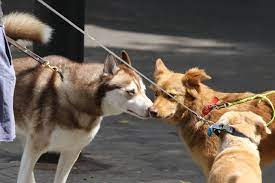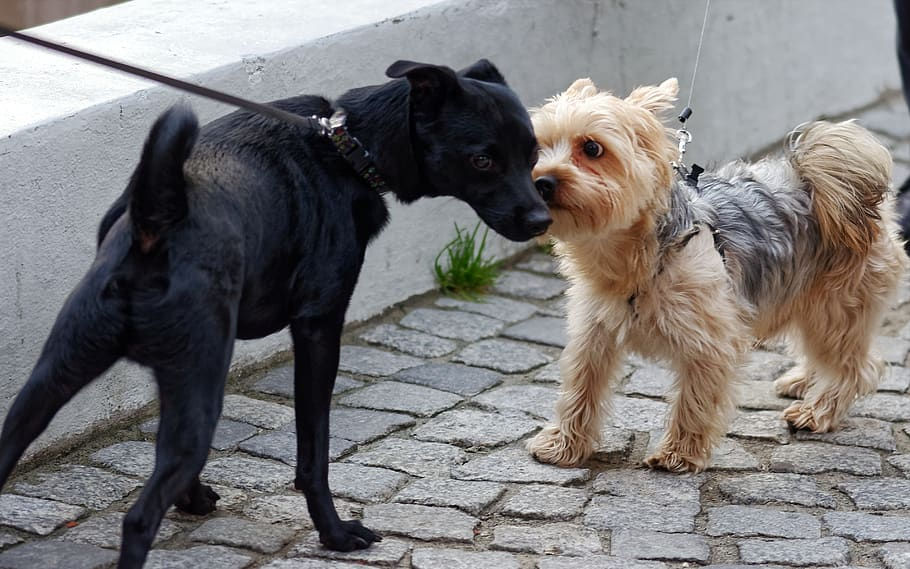Dog meeting dog
- Ingrid Mulson
- Aug 9, 2024
- 3 min read
When you are walking, if other humans wish to pass, and there is enough space, you keep walking. Still, if on the way or the sidewalk that you are walking on the space is narrow, you look at the various possibilities the environment offers you.
For dogs to pass one another politely and as calmly as possible, some parameters must be taken into account.
How long the leash or long line is
Er yes ! The size matters !

On a leash ( less than 2 meters), if passing leads to meeting, it is preferable that it only lasts the time to sniff the rear. With the little span that this length gives to dogs, whatever their relationship to their fellows, whatever their temperament, they are not able to communicate in their own way. Communication is then truncated and biased, likely to leading to misinterpretation from the other one. Whether both or only one is on a leash, I recommend to respect this as well.
If the dog is on a long line (at least 5 meters) and/or off-leashed, the meeting can be serene if the dogs are comfortable. If one or both are on the leash, it is important that it remains as loose as possible in order to bring back a minimum of equity, so that the dogs are able to communicate without ambiguity.
When passing is complicated…
However the dogs passing is assessing the situation, a narrow environment, which reduces the space, can lead one or both to deviate (at the risk of ending up on the road or in brush) or to quarrel so that the other walks away.
One (or both) can experience negative emotions at the sight of a fellow one. It can be fear, a disability that makes him feel distressed. How close the meeting is likely to be exacerbates the emotion. When a dog has no fallback solution, he is left with freezing or fight back.
It is essential to keep it in mind that a dog's reaction (barking, pulling on the leash, growling, not paying attention to human calls, having piloerection, appearing bigger because the muscles tense) is not voluntary : it is physiological and emotionally driven (uncontrollable). Doggy does not choose to put himself in this state.
What to do when the environment makes a meeting complex ?
I have a strong empathy for humans who guide a dog that experience issues seeing or meeting a fellow dog. It's just as difficult for them as it is for Doggy : seeing their dog in distress, suffering the judgment of other individuals, monitoring the surroundings to anticipate, being vigilant at all times. Whether their dog chooses to flee, to freeze, to fight back, their dog is not "mean", he is having a bad time.

When the dog needs space to pass by and the environment is narrow :
use parked cars to protect yourself and let the other dog pass,
ask the human whose dog is distressed what can help his dog,
ask the human who is walking to you to wait a few seconds on the side,
observe the environment and use the spaces that allow distancing the time that the other is passing.
Until a dog learns to tolerates to pass by another one, some situations may not be foreseeable or controllable. The environment and trained tricks during fun sessions can become your allies.







Comments